July 25 marks the 76th anniversary of the breakout by General Omar Bradley’s First US Army in Operation “Cobra,” which is the fulcrum of the Normandy narrative following the spectacular success of the landings on June 6. Lost in the commemoration of service and sacrifice on July 25 is the bloody Canadian-led clash on the eastern flank of the bridgehead—known as Operation Spring—that unfolded in concert with the American push and proved vital to that monumental victory.
Some of the more than 1,000 artillery pieces firing in support of Canadian battalions assaulting Verrières Ridge on the morning of July 25, 1944. LAC, PA-166804
Since the D-Day landings, American, British, and Canadian forces had been locked in a deathmatch with the Germans in the bocage country, battling tooth and nail to gain much needed elbow room in the crowded bridgehead. Having recovered quicker than expected from their initial shock, the German defenders had managed to rope off the bridgehead by early July, and as a result, a near stalemate developed. With success measured by feet and yards in an attritional struggle reminiscent of the charnel house battles of the First World War, the Western Allied effort paled compared to that of the Soviet Red Army juggernaut rampaging across Eastern Europe, churning up hundreds of miles at a clip, crushing German divisions and stealing world headlines.
Politically, the lack of decisive action and a corresponding dramatic victory weighed heavily on Allied command plagued by the backbeat of a Presidential election year in the US and increasing war weariness in Great Britain. As one Canadian Brigadier quipped, “the whip was out” to force a decision in Normandy, and General Eisenhower, under immense pressure, pushed 21st Army Group commander General Bernard Law Montgomery (Monty) to act more decisively. Dissatisfied with Montgomery’s current plan to hold with General Miles Dempsey’s Second British Army at Caen to permit Bradley’s Army to bash in the door at St. Lo, Ike ordered a two-fisted offensive to begin immediately. The results were Operations “Cobra” for the Americans and “Goodwood,” with its Canadian subsidiary “Atlantic,” for the Anglo-Canadian forces.
Goodwood, launched on July 18, ended abruptly just two days later despite promising success in its initial stages. Ultimately, the much-ballyhooed Goodwood failed when Dempsey’s armoured forces slammed headlong into the German-controlled Verrières-Bourguebus feature that sat roughly five miles south of Caen. This embryonic line, which by the second week in July formed the main German defensive hinge in Normandy, held firm, inflicted grievous losses and robbed the most elusive of all elements for success—momentum—from the British breakout bid.
However, amongst the misery came one bright spot; during the Canadian subsidiary operation, a small rupture of the German line appeared at the westernmost end of the feature known at that point simply as Verrières Ridge. An initial attempt by the fledgling 2nd Canadian Corps to exploit the breach failed, but out of this costly interlude, Operation Spring was born.
“Spring” (originally “Springtide”) was the brainchild of Lt. Gen Guy Simonds, the 2nd Canadian Corps commander, whom Monty damned with faint praise as Canada's finest general: the best of a mediocre lot. Working under General Miles Dempsey’s Second British Army, Simonds hoped at first to have Spring achieve the long sought-after breakout when he first conceived of the operation on July 20. However, bad weather coupled with the sluggish performance of his divisions, and the stiffening German resistance that featured veteran eastern front units backed by elite Waffen SS Panzer divisions and the guns of two SS Panzer Korps, dashed those hopes.
In the interim, Ike continued to pressure Montgomery for decisive action south of Caen. Realizing that prospects of a clear breakthrough were now limited in this sector after intelligence revealed close to 400 panzers, tank destroyers and assault guns south of the ridge, Monty resumed his usual cautious stance. Instead, he chose to create the conditions for a breakout as he had done in earlier battles in North Africa and Sicily, by instructing Dempsey’s army to engage in a series of attritional attacks on both sides of the Orne River, something Second British Army commander euphemistically coined “Tennis over the Orne.” Rather like a boxer using his jab to weaken his opponent before a roundhouse, the concept called for a series of attritional attacks on both sides of the river to “bat” German panzer reserves back over the river while subjecting them to the might of airpower while on the move.
As such, “Spring” became the first of these attacks, with Simonds calling for the capture of Verrières Ridge at night in a move designed to outflank Hitler’s beloved 1st SS Panzer Division (Leibstandarte) dug in along its eastern reaches. With Verrières in hand and the German flank turned, the trap would be set; for Simonds planned to lure the German reserves into a grinding killing match where he would employ the ridge to his advantage, smashing the panzers coming to rescue their trapped brethren with the combined weight of allied tanks, airpower, and anti-tank guns. On first blush the plan, which resembled Monty’s El Alamein in microcosm, appeared sound. If successful, it would also give the ambitious Simonds his “Vimy Ridge,” a contemporary victory that would rival or surpass the tremendous Canadian victory of the First World War that some claim “built the nation.”
The operation, however, was anything but “sound,” suffering as it did from its overly complicated nature and “war by timetable” approach. Strict timings and lack of contingencies formed an unholy alliance with Simonds’s autocratic command style and penchant for micromanagement, which ultimately proved its Achilles heel. Timed to coincide with Bradley's attack to the west on July 25, “Spring” stumbled out of the blocks in the darkness, never recovered, and then met a grim fate by early afternoon. In just one morning, the two lead infantry divisions in Simonds’ Corps had suffered 1500 casualties (500 dead) with little to show for their sacrifice save for bitterness, recrimination, massacre, and mutiny.
Officers from the 1st Battalion, The Black Watch (Royal Highland Regiment) of Canada taken two months before the battle for Verrieres ridge. All but eight of these men became casualties in Normandy. Courtesy Black Watch Archives.
One-fifth of the casualties came from just one battalion: the Black Watch (Royal Highland Regiment) of Canada, who lost 300 of 320 men carrying out Simonds’s instructions to rush the ridge in broad daylight. The flood of casualty telegrams made clear that Canada’s most storied regiment (equivalent in Canadian terms to the American 101st and 82nd Airborne, the Big Red One or the 1st Marine Division) had suffered 94 percent casualties in fewer than four hours of fighting.
In the short term, “Spring” faded in large part from the Normandy tapestry, swallowed up by the spectacular success of Bradley’s Operations Cobra, which began on July 25, but whose success only became apparent on July 27. Although not designed as such, “Spring” served the purpose of a “holding attack” as it shielded Bradley’s surging army at the most crucial juncture. During this crucial two-day window, the American assault battalions could afford to catch their breath and exploit the breach without the fear of facing a stiff counterattack by panzer reserves still furiously engaged with the Canadians on Verrières Ridge. Given room to breathe, First US Army indeed maintained the most elusive of battlefield elements needed for success—momentum—and this paved the way for a breakout and ultimately the collapse of the German army and victory in Normandy.
Meet the Author
David O'Keefe is an award-winning historian, documentarian and professor at Marianopolis College in Westmount, Quebec. He served with the Black Watch (Royal Highland Regiment) of Canada in the Canadian Forces in Montreal and worked as a signals intelligence research historian for the Directorate of History and Heritage. He is the author of Seven Days in Hell: Canada's Battle for Normandy and the Rise of the Black Watch Snipers.
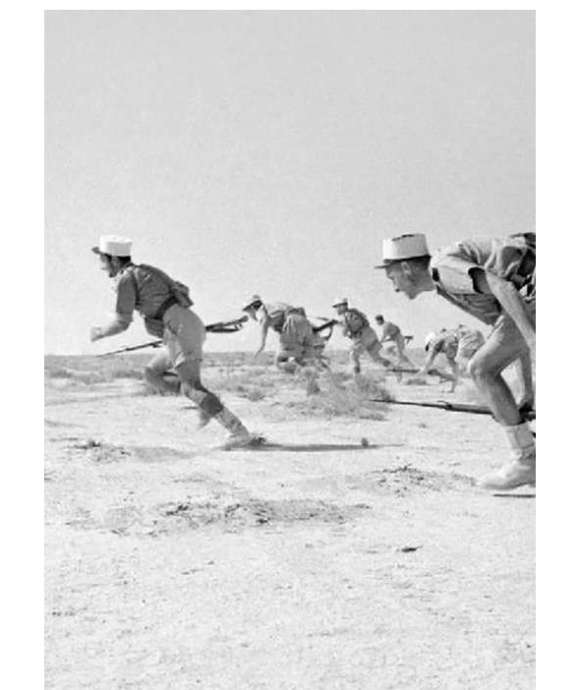
Forgotten Fights: The Free French at Bir Hacheim, May 1942
The courageous Free French defense of the remote desert fortress of Bir Hacheim in May 1942 helped turn the tide of the war in North Africa.
Cite this article:
MLA Citation:
APA Citation:
Chicago Style Citation:
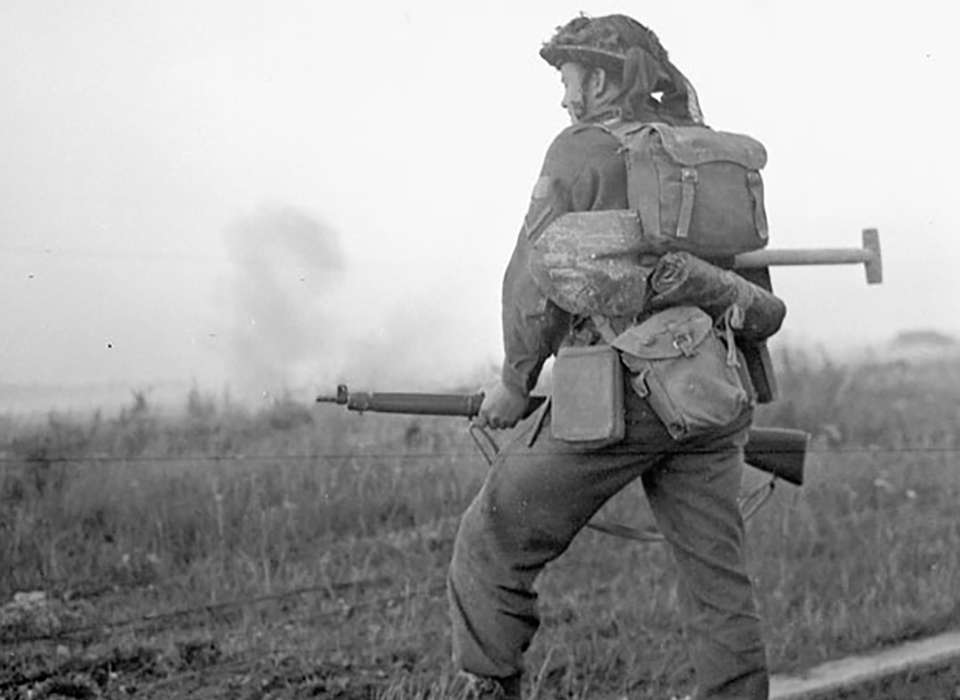
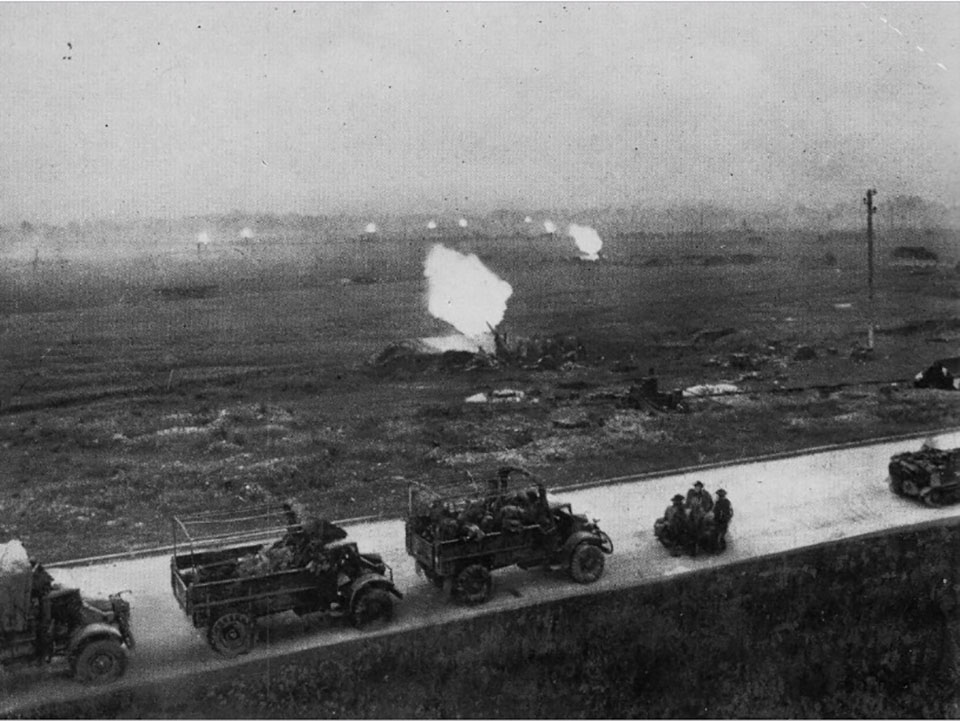
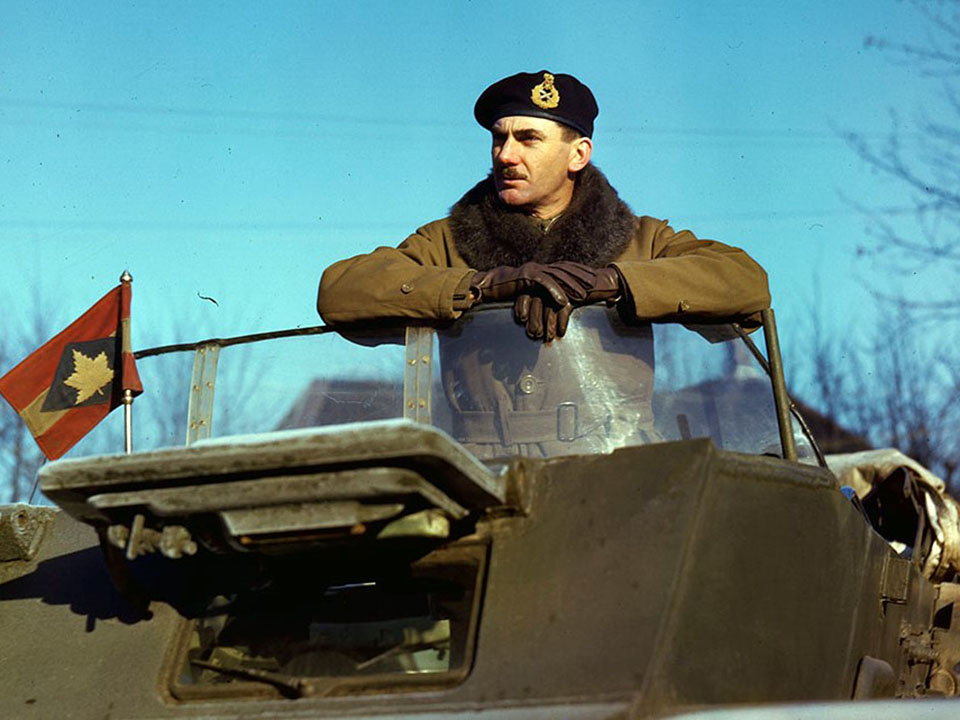
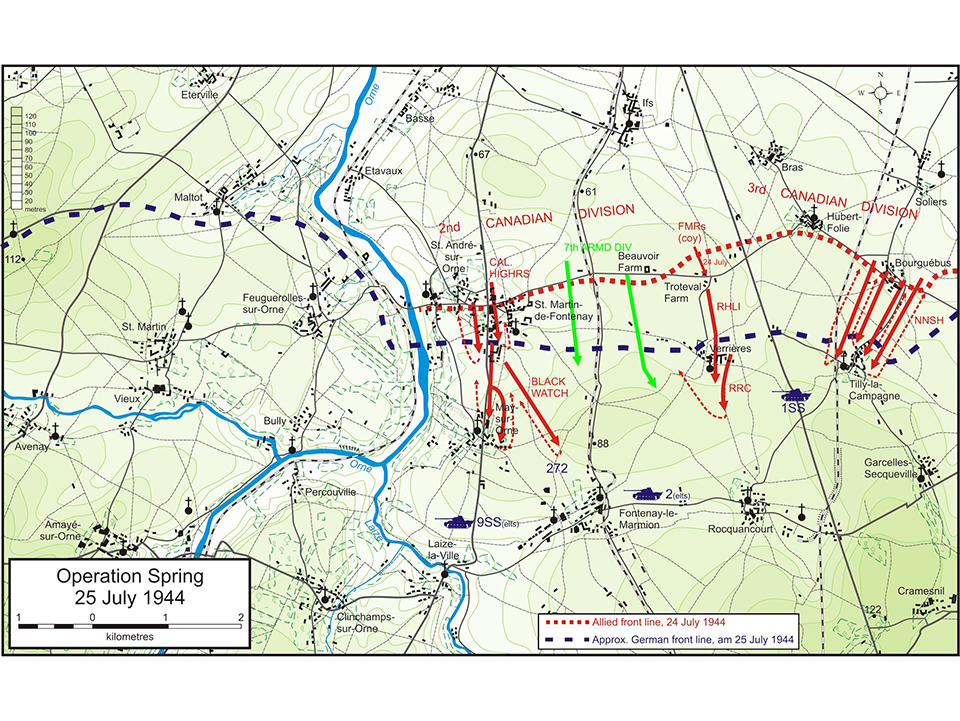
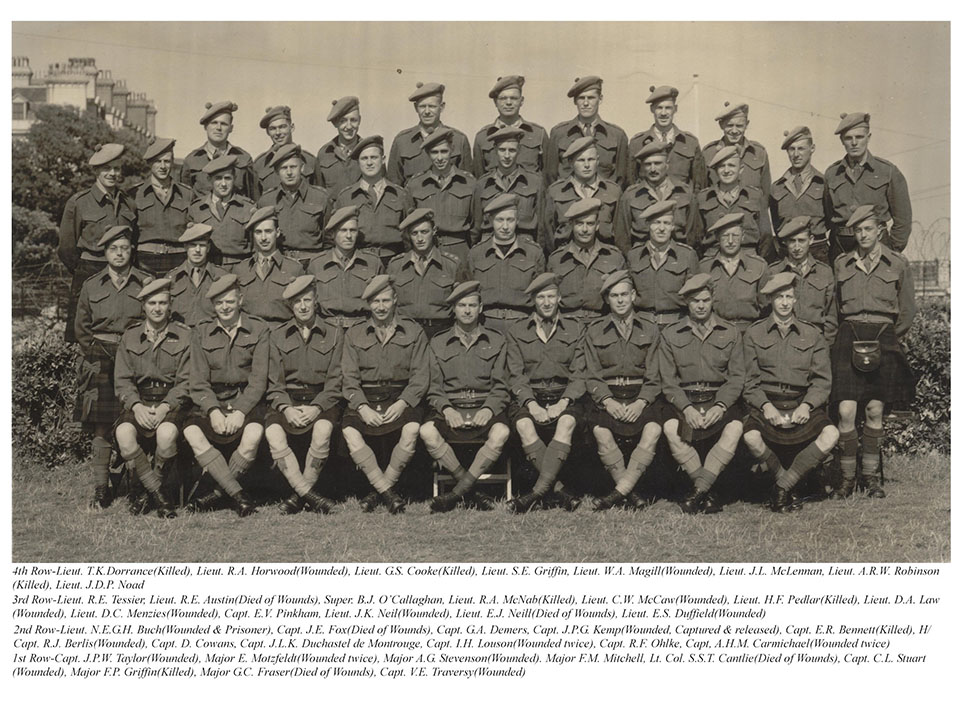

![Max Fuchs, New York City cantor, sings as Rabbi Sydney [sic] Lefkowitz, Richmond, VA, conducts the first Jewish services from Germany.](/sites/default/files/styles/max_650x650/public/2025-10/image1.jpg)






